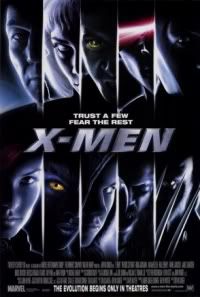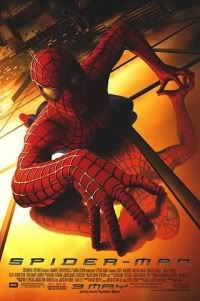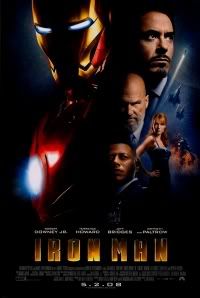April 21, 2009
Bookmark and Share
Follow BOF on TWITTER.COM!
Post your Bat-Takes on the BOF MESSAGE BOARD!

Someone somewhere in Hollywood seems to have grasped that the supposed "fad" aspect was a self-made situation, and that the drop in critical and box office success not just of the broad array of comic book films but even within the more popular franchises (Superman and Batman) was due to the same Hollywood reaction to the perception of a fad. They started to see that successful films depended upon recognizing material that contained the most interesting characters and stories, and to seek out creative filmmakers who could recognize these popular aspects of the material and respectfully adapt it to the screen. Once the message sank in, a golden age of comic book films was ushered in.

The coming of Marvel’s Spider-Man to the big screen was a huge event, since this was a character on par with Superman and Batman in terms of being hugely popular already with mainstream audiences. It was very important in establishing the modern comic book film era, to have a new franchise entry who was at once so recognizable and popular, to kick off a renewed interest and growing near-obsession with the genre among the mainstream film-going audience. The SPIDER-MAN films received critical acclaim, not to mention absurdly high box office receipts. We also had the emergence of the X-MEN films. These, too, were films that gained critical acceptance and were popular with audiences.
Once studios embraced the genre as sustainable, they also embraced a forward-looking mindset as well. Building franchises, and taking the time and energy to do it right, became important. This in turn required an even deeper and more serious look at the genre, at the source material, and at the proper creative teams to lead the charge. What had to happen, and what I think was in fact inevitable once this new mindset became widely understood and accepted in Hollywood, was to take the genre to a new level. The SPIDER-MAN films had indeed revived the genre and fueled the modern rise of comic book films. However, it was still rooted in the pre-existing model of adaptation of the material, and built upon the foundation laid by SUPERMAN back in ‘78.
Now, Hollywood had reached the point where something significant had to come along to reshape the genre in a way that transcended not the source material itself – since the material was steeped in deep dramatic themes and strong characterizations – but rather that transcended the existing perception of the source material by mainstream audiences and critics.
The first shot across the bow of popular misconceptions about comic book films was BATMAN BEGINS. While not actually bringing about such a complete rethinking, it laid the groundwork. It accomplished this in a way that few expected, and that few perhaps realize: The introduction of the illusion of realism. By placing the characters in a world that seemed plausible and seemed to mirror our own, it made the characters immediately more accessible. It challenged the existing popular impression that comic books can't possibly say much of relevance to our lives and our world because they are so far removed from that world.

A new way of conceptualizing the comic book film had emerged, albeit still in its primal stage. And we had this introduction of an new paradigm while the genre was still rising in popularity based upon strengthening the original foundations. Still, traditional sentiments about comic book films had not been completely erased yet. The foundation existed, but what was necessary was to build upon it. The year 2008 was the milestone in the fundamental shift of the genre. That shift began with IRON MAN. The film had strong similarities to BATMAN BEGINS and represents the first film of this new framework to realize the opportunity to utilize the fantastical in a way that breaks with previous tradition.
Another entry into the superhero genre is notable here. While not based upon a comic book, HANCOCK in fact adopted the new conceptual framework rising in the comic book genre of films. The film imagines a character essentially embodying the most fantastical powers of a superhero (flight, invulnerability, super-strength), but asks what this would look like in the real world, and how the public would really react.
A film now arrived that removed any doubt that a fundamental shift in the genre was occuring: The sequel to BATMAN BEGINS, THE DARK KNIGHT. The film was already having an impact several months before its release, generating Oscar buzz the year before it appeared in theaters. Advance talk of box office records began to reach hysterical – and, as it turns out, prophetic – proportions. It swept into theaters like a hurricane, exceeding all expectations and wiping away most of the previous conceptual framework for the film genre.
THE DARK KNIGHT fundamentally transcended common perceptions of the genre – perceptions, though, that were already in flux and shifting toward the new conception of the genre. Among the many reasons that audiences and critics responded so phenomenally to the film, one reason in particular is most relevant to this discussion: the grounding of the film in that illusionary realism, not just in how it literally attempted to build a world with imagery and limitations that audiences recognized, but in characters who were grounded in a seeming realism in their emotions, their reactions, their entire persona. Once audiences envisioned these characters as real people, then the actions and motives of those characters also became more real.
There was not only a realization that the genre was now here to stay as a dominant box office force, but also that a new type of film had emerged from the genre to set a standard that would guide most future big comic book films. By the end of 2008, eyes were turning to watch the next film on the horizon that seemed about to reinforce the framework introduced by THE DARK KNIGHT, and to test the real viability of how far the boundaries of the genre could be pushed.
That film, of course, was...
No comments:
Post a Comment